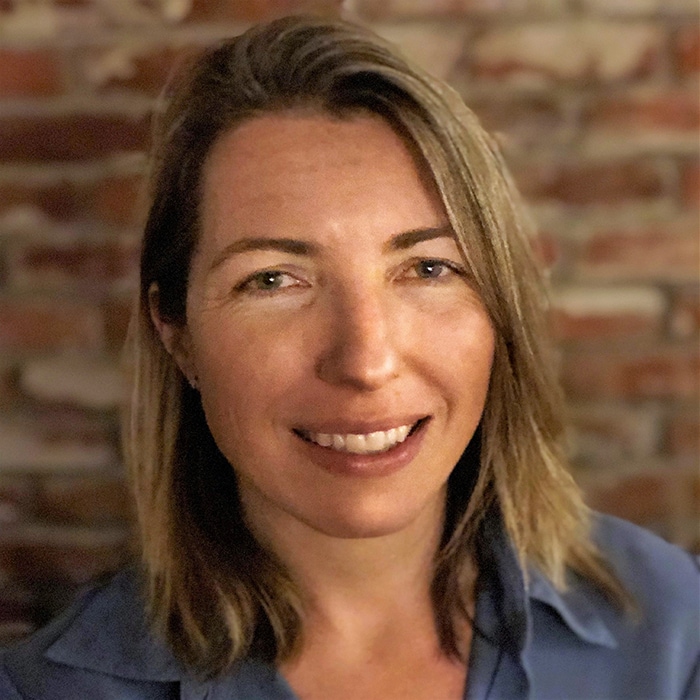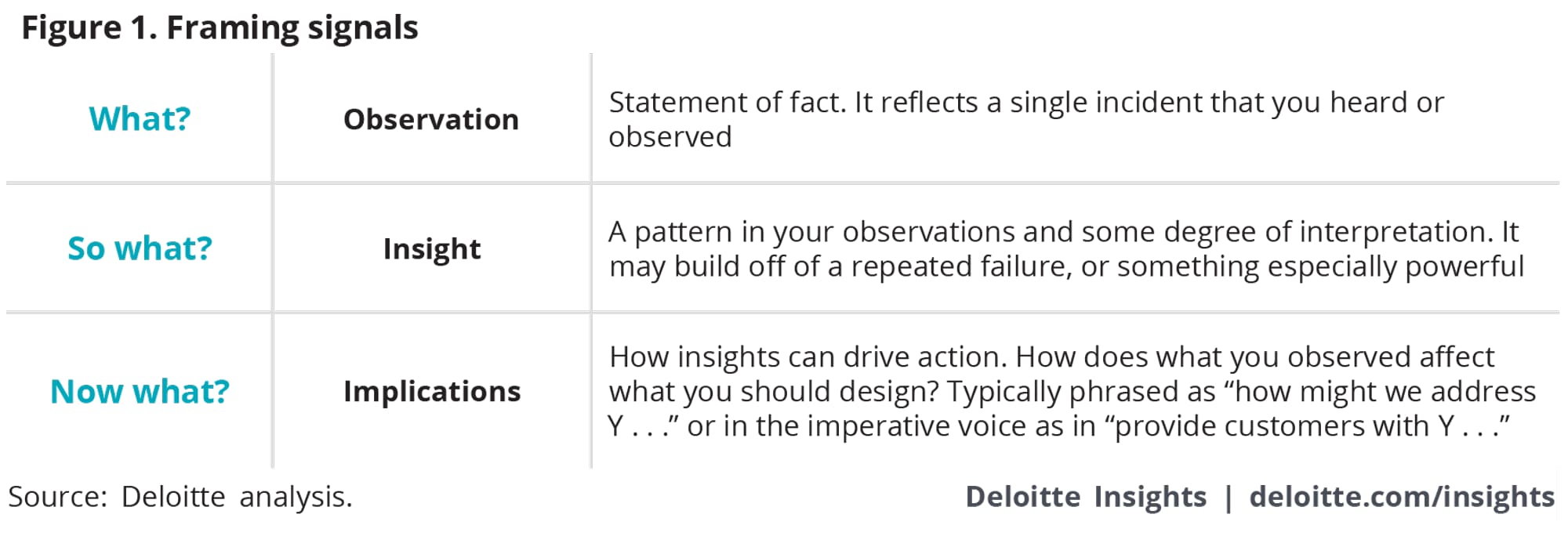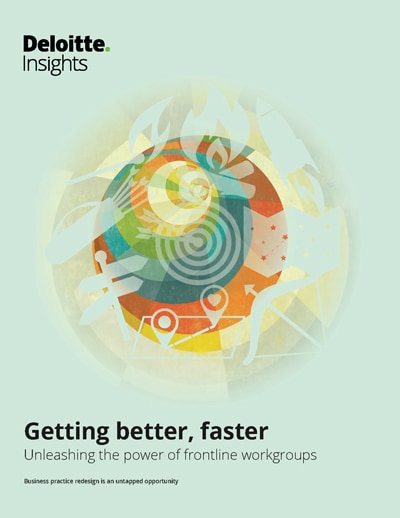Reflect more to learn faster has been saved

Reflect more to learn faster No matter how fast things are moving, take the time to reflect on your experiences, supporting even faster movement
31 January 2018
 John Hagel III United States
John Hagel III United States John Seely Brown (JSB) United States
John Seely Brown (JSB) United States Andrew de Maar United States
Andrew de Maar United States Maggie Wooll United States
Maggie Wooll United States
Yes, speed matters. But we can’t focus too much on speed—otherwise there’s no time for reflection, and reflection is critical for learning. For workgroups, part of the learning process should be to continually step back and ask how refining our view of the destination might help us progress even faster.
Introduction: The dual role of reflection
When it comes to accelerating performance, there’s a paradox: If we want to have greater impact, faster, we have to slow down enough to reflect on what we’ve done and what we’re going to do.
It’s a balancing act. Speed matters, of course, but we can’t focus too much on speed—otherwise there’s no time for reflection, and reflection is critical for learning. If your workgroup just acts and acts without pausing to understand what you’ve learned and how to apply it, you won’t likely achieve a higher level of performance. Action without reflection is a waste of time.
At the same time, it isn’t about constantly pushing forward to complete the next task. Taking time to step back and reflect on actions, the results of those actions, and our expectations for actions can be a rich source of insight and learning. What seemed to have a greater impact? How can we do more of that and amplify it? This process of reflection and adaptation—before action, during action, after action, and outside action—is often very powerful.
Learn More
Explore the practices and case studies
Read an overview of the opportunity
Download the full report or create a custom PDF
Reflecting as a group holds unique potential for uncovering more insights, drawing more connections, and using them to build better solutions. A group’s diversity and passion can be especially valuable when brought to bear on making sense of and interpreting results and data and developing potential new actions. Reflection can serve a dual role, drawing out members’ challenges to generate new insights and ideas and, at the same time, helping to build more alignment around a shared understanding of the actions that may have the greatest impact. Workgroups often need opportunities to pull out of the demands of the moment and revisit how near-term actions connect to improving the shared outcome.
Reflection can help workgroups break out of an incremental mind-set at a time when tried-and-true techniques may prove inadequate for the variety of new and unpredictable challenges and cases of first instances that workgroups will encounter.1 Regular practices of looking at results, observations, and data, and being open to the implications of that information, can help workgroups break from the status quo and chart new paths forward that could better achieve the desired outcome. In reflecting on near-term initiatives and assessing whether they are accelerating us toward our destination, workgroups also learn more about the destination they are striving to reach. Part of the learning process should be to continually step back and ask how refining our view of the destination might help us progress even faster.
You know you need this practice when:
- The workgroup isn’t getting the rich, real-time, and context-specific performance feedback it needs
- All the reflection that takes place is on failures; there’s no reflection on successes
- Successes seem rare and appear to be either accidental or stem from heroics rather than discipline
- Performance improvements developed in one part of the workgroup rarely scale to others in the workgroup
The reflect more to learn faster practice: What it is
Reflection, for our purposes, is about understanding and interpreting information—in the form of results, observations, and data—to evolve our actions to get more impact. It is primarily a group activity. For accelerating performance improvement, we should create more opportunities for group reflection. A diverse group of people willing to challenge each other can get much further than any individual sitting in a room with a mountain of data and trying to make sense of it.
Reflection can get a workgroup together to challenge each other around:
- What worked better than expected?
- What didn’t work as expected?
- What assumptions need to be changed?
- What strengths can we build on to ratchet up the impact?
In addition, reflection is about stepping back to remind ourselves of the group’s long-term aspirations and the role of near-term actions in accomplishing it.
. . . and what it isn’t
Learning for the sake of learning. Reflection can be valuable when the workgroup uses it to learn more about impact and to catalyze action toward a destination. Without a destination in mind, groups may learn from their experiences, but the learning won’t necessarily help them improve performance.
Finding fault or failure. Rather than run until something goes wrong, then fix the problem, and keep going, continuous reflection constantly seeks greater impact. It is looking at the successes, the partial successes, and the failures, at the errors that happened and the errors that didn’t, to try to determine what the workgroup should do next.
Just reflecting on the problem or the opportunity. To get better faster, the workgroup should reflect on its approach to problems and opportunities. In fact, the more you reflect on your approach, the more likely your biggest problems may become your biggest opportunities.
Intersections with the other eight practices
Taking the time to reflect is a conscious decision. It can strengthen and support all of a workgroup’s other practices and activities—as long as there’s a mechanism to translate insights into action.
- Commit to a shared outcome. Through reflection, a workgroup can learn how to have more impact on the shared outcome and assess whether a shared outcome is still the highest-value pursuit.
- Maximize the potential for friction. Bringing together diverse and passionate people can be a necessary condition for rich reflection.
- Seek new contexts. The techniques and approaches encountered in a different context can form the basis of reflection on what is context-dependent and what is more generalizable, and reflection can transform observations into relevant, actionable insights.
- Cultivate friction. Challenging during reflection—with the aim of developing better approaches—is important, both pre-action and post-action.
- Eliminate unproductive friction. An environment of trust and respect is a prerequisite for the honest and rich reflection that can accelerate a workgroup’s learning. Reflection focused on achieving a shared outcome, supported by rich inputs, can make it easier to articulate disagreement in a productive way.
- Frame a powerful question. The question often shifts the scope beyond just the moment at hand, connecting that moment to the implications and learnings across moments and over time: What did we learn that informs our powerful question?
- Bias toward action. Action creates rich inputs for reflection. Reflection draws the relevant learning from action to accelerate performance.
- Prioritize performance trajectory. The performance objectives and metrics can ground and inform a workgroup’s reflection about the impact of actions and the performance it is achieving.
Putting the practice into play
Reflection for faster learning comes from first making a conscious decision to make it a priority for the group. A workgroup should focus attention on getting diverse and robust information to feed the reflection. Also, grounding reflection in the group’s larger goals for impact can help to ensure that the reflection is most valuable for accelerating performance. Members can practice reflection—at different levels of granularity and at different moments in time—to reexamine the status quo in light of the desired impact and trajectory.
Feed the reflection
In order to learn how to get more and more impact, a workgroup needs new information and interactions, along with a growing base of new knowledge, upon which to reflect, draw insights, and determine new actions. Capture what you can to feed reflection—data and formal metrics as well as the experiences and observations of group members and others—but try to keep data collection simple. For example, look for ways to exploit and analyze data that already exists, such as the digital exhaust that groups leave behind as they interact with people, technology, and equipment.
Our technology generates an increasing amount of data, such as the number of times we badge into work, or how we move and to whom we speak, or how much time we spend using a particular app, or the ways we link from one website to another while searching for information. Often invisible to us, this data can provide insight into the underlying factors that influence the effectiveness of a particular approach or opportunities to tinker with how the workgroup itself works to create more impact.2 At Southwest, the Field Tech workgroup has begun to evaluate real-time airline health maintenance data—on the planes’ operations, temperatures, rotations, etc.—to identify patterns that act as early warning for parts nearing failure so that they can be addressed before they become an issue. Collaboration tools can bring further visibility into the data around our work—interactions, queries, and searches, distribution of comments, usefulness of our contributions, and shared objects—for individuals or the group. Often this data is available in real time and can be combined with data pulled from other sources for dynamic feedback.
More data—of all types, even if it involves just short back-and-forth conversations—means more transparency. Look for ways to be radically transparent within the workgroup. A more transparent group has more potential value because members can more fully understand the context of what’s going on. More context supports more action, trust, and respect, all of which can fuel richer reflection.
If “what gets measured gets managed,” the corollary is that workgroups that cast a wide net for potential insights have to avoid the trap of managing everything they measure. Just because data is available and easily collected doesn’t mean it is valuable. At the same time, we don’t always know the value of data in advance, so it may be worthwhile to consider all sources of information initially. For data and metrics that will require more effort to gather, go through the thought process of why each type of data would be relevant to improving the outcome—for example, what information would it provide that is currently missing, and will that change the next action?—before deciding to invest in data-gathering resources.
Staying focused on learning how to evolve a group’s actions to improve an outcome is important for making reflection productive. Seek continuous feedback as just one more valuable source of information to draw insights from about how a new approach is working, the unexpected consequences of an experimental solution, or our own performance in the workgroup. In this context, feedback isn’t an evaluative or punitive tool or a check-the-box reporting activity. The purpose of giving and receiving feedback is to discover something we don’t know—feedback that is expected or confirms what we believe is less useful than that which is surprising.
Feedback questions for individuals
1. What should I continue to do?
2. What should I stop doing?
3. What should I start to do?
4. What can I do to make the group more successful?
A key to fostering more productive reflection is to identify and implement faster, and richer, feedback loops to get internal and external feedback on a recurring basis. Workgroups should look for opportunities to establish feedback loops that help members understand what the customer expects or needs and where they stand relative to that; they should also look for opportunities to create loops that help point to where they can focus their efforts to have a greater impact. The feedback that groups need has parallels to the feedback that individuals need.3 In fact, encouraging group members to ask for feedback, understand it within the larger context, and translate that feedback into action at an individual level can establish feedback-seeking behavior that translates into how members reflect and improve performance as a group. If members aren’t pulling for feedback, they aren’t likely to get it. Consider how even in loosely organized open-source software initiatives, contributors get rapid feedback from others who try their code. Broad adoption of a team’s or individual’s work products confers status. Contributors carefully monitor this measure of performance and try to learn from others whose contributions gain much greater acceptance.
The patterns of feedback can also yield insight into feedback loops’ effectiveness. For example, when GE FirstBuild launched its open innovation model for appliances, members tried to engage the community on every possible design element, down to the shape of the ice-dispenser lever in the freezer door. Looking at the feedback in totality made clear that FirstBuild’s community was disengaged and not giving the group useful, actionable insight. FirstBuild founder Venkat Venkatakrishnan said, “We made one big mistake: We assumed that everyone that was part of our community had a passion for appliances.” The group refined its approach to be less reliant on the community for the day-to-day product development.4
Make the most of your -mortem
Most people in organizations are familiar with the postmortem.5 We use the term somewhat facetiously, as workgroups can learn from the practice of examining and reflecting on a problem, its condition, and the circumstances surrounding it—not just in “deaths” or failures but over time—every step of the way. Timing is important: finding time to reflect and determine what level of reflection is appropriate at a point in time—before action, in action, after action, and apart from action. Each has its own objectives and techniques.
These types of thoughtful reviews require groups to commit time and resources and for members to participate in a spirit of creating something better rather than defending a position, rationalizing results, or gaining status. To generate more actionable insights and avoid check-the-box status meetings, reviews should prioritize whatever is surprising—good or bad—and focus on causality. The goal is to improve impact, and to do that groups need to better understand what drives impact and how best to affect those drivers. Finally, reflection, even productive reflection, should have an end point to avoid the paralysis of analysis. The goal is to reflect just enough to know what to do next to gain even more valuable information about the current question.
Perhaps the most important objective of conducting a pre-mortem, or pre-action review, in terms of accelerating performance, is to frame the questions that the activity is intended to answer and to remind the participants of the context surrounding the action. What is the purpose of the action? What is the desired impact? What is the most valuable information that could come from the action? The pre-mortem leverages the group’s collective experiences to clarify what is known and unknown, align on what is needed, identify and mitigate known risks, and talk through possible scenarios and triggers for alternatives in order to give the action the best possible chance of making the desired impact. Pre-action reviews may be brief—in the US Army, units sometimes focus around the simple question, “What’s important now?”—but even in quick-turnaround situations, some reflection to envision cause and effect, action and reaction, in advance, can make a difference in managing risks and ratcheting up impact.
Pre-mortems can also be thought of as occurring between episodes or in the absence of an episode. For example, the Field Tech workgroup at Southwest took a largely reactive maintenance program and turned it into a preventative maintenance program by reflecting on and analyzing all of the existing data (pilot write-ups, in-flight diversions, delays) to identify what caused these issues. The insights helped members focus on addressing the most common instances of errors and aircraft downtime before they could even occur through pre-mortem reflection. By taking the time to reflect on the issues as a unit, they were able to uncover larger patterns that led to better overall performance of the maintenance crews and the airline’s operations.
Reflection in action—on what’s working, what isn’t, and how conditions are changing—can help workgroups reorient to be more effective in the moment. In-action reflection often occurs individually or in small groups, in micro-reflections that are so short they might seem involuntary. Taking even a tiny pause to step back and reflect on the action, during the action, can yield powerful insights into how the approach might be more effective before key details or ideas are forgotten. Understanding and playing with the in-action time horizon comes with experience, but a useful first step is to take advantage of small moments outside of action. To the extent that a workgroup can slow down the moment, creating even small spaces for noticing, comparing what we observe against what we expect, and considering the implications for action provide a unique opportunity for learning that might be lost otherwise and provides more concrete input for postmortem reviews.
Increasingly, technology can capture more real-time details and context—think dash-mounted cameras or GPS features in smartphones—that can be brought into the postmortem or after-action review. In addition to supplementing faulty or incomplete observations, one benefit of sensors and other real-time capture technology is that it can be used to create dashboards that support rapid reflection in the moment and more robust analysis in the after-action review.
Conduct after-action reviews6 to create an opportunity for the group to step back and consider what occurred and what the implications are for the next action. It’s often in this stage of reflection that patterns begin to emerge and new approaches are developed. For the firefighters of FDNY Rescue 1, informal postmortems begin as soon as the firemen are riding back to the firehouse, capturing raw observations and impressions, including what was particularly challenging or unique about the situation. The conversations continue back at the firehouse, where other responders hear their stories and share their own insights; together, they are able to draw patterns and develop an action plan for the future, based on the unit’s collective experiences. Additionally, when firemen have identified a particularly challenging, complex, or ambiguous scenario, they try to recreate that scenario in training so that all members of Rescue 1 can be better prepared in the future. Effective postmortems can enhance a workgroup’s ability to handle a similar situation more effectively in the future—and to identify incorrect decisions or assumptions and how they were made.
An effective postmortem is an opportunity for group members to challenge current ways of thinking and performing, if everyone is open to acknowledging the factors that may have contributed to failure and success. Such candor is often lacking in organizations out of fear of reprisal or loss of status. Workgroups should be committed to norms that keep politics and one-upmanship out of the group’s interactions and might find it helpful to use a facilitator and structured questions to offset the fear and loss of control that might come with speaking openly.
Postmortems should spend as much time on what went right as on what went wrong, in particular what had more of an impact than expected, and explore how to build on that and do more of it. While the positive-negative balance makes it a safer environment to explore every aspect of the project, it keeps the group oriented toward future actions and performance. Participants also bring their supplemental performance data—including metrics such as how often something had to be reworked—to ground the discussion away from default assumptions and subjective impressions.7
A workgroup’s power is that it can come up with better solutions and have more impact than an individual, no matter how skilled, on her own. It’s taking what one member knows, coupling it with what another member of the groups knows, getting other members to react and add, and creating something totally original. A group has the ability to continue to get better and better at performing under changing circumstances in a way that an individual can’t, by effectively leveraging the collective passion, knowledge, and experience to create new solutions from which to continue to iterate and improve. Doing so requires the workgroup to invest in one more level of reflection.
The workgroup can evolve its own practices of reflecting and taking action. Periodically reflecting on how you reflect—being aware of which reflective practices seem to be generating increasing impact over time—helps guard against falling into a routine with diminishing returns.8 Research from the University of Alabama in Huntsville suggests that groups improve their performance when they meet in a structured environment in which each member reflects on her role and how it relates to the overall performance of the team.9 By drawing out perceptions, supplemented by data, members can identify patterns in their own interactions and thought processes to understand how they contribute to incorrect or ineffective actions and how to make better decisions that have more impact in the future.10 Pay attention to the way messages are conveyed and processed as well as what is not being said. What is the timing, and who is involved? What is the energy? What is the result?
Consider how the Joint Special Operations Command (JSOC) Task Force11 had to reflect on its own practices when its overwhelming firepower and expertise were failing to slow attacks by Al Qaeda in Iraq. The task force took a step back and through careful thought and reflection came to understand that “AQI operated in ways that diverged radically” from what American forces were accustomed to fighting. In the time it took for US commanders to move a plan from creation to approval, the battlefield for which the plan had been devised would have changed. The task force had to reflect on its own practices for processing and learning from intelligence information, because members weren’t learning what they needed to fast enough to respond, much less make progress against the enemy.
The data, when they took time to look at it all together, showed that the tried-and-true tactics weren’t working. This opened the door to greater questioning of assumptions about what members “knew” about how things worked. With new insight, they restructured the force from the ground up on the principles of transparent information-sharing and decentralized decision-making authority to make shorter feedback and reflection loops tied closely to the action. As a result, forces began conducting more and more raids per night, getting intelligence information across the chain of command much quicker, and acting on its analysis faster. By being their own judge but not their only judge, relevant outsiders helped units within JSOC perform at their highest potential.
Make sense of signals
During action, in action, after action, and in-between action—we are gathering more and richer information. It becomes valuable when the workgroup collectively engages with the raw information to learn from it and develop new action (see figure 1).12 Group members will likely begin to observe more carefully and bring richer context back to the group as they see the group’s capacity to derive actionable insights improve.

Most of us value patterns. But years of standardization have taught many of us to abhor anomalies. We try to hide the exceptions, rationalize the pieces that do not fit, and hope that no one notices. Yet breakthroughs happen when we notice and explore the inconsistencies, anomalies, and unintended consequences—these are the leverage points that can accelerate impact. Detect anomalies and celebrate exceptions,13 acknowledging what you don’t see in the data rather than looking just to confirm a hypothesis. Sometimes an insight lies in connecting the dots between what isn’t there when new data doesn’t align with an existing belief.14
When the group can recognize emerging and evolving patterns, it may help to make sense of the passive data it collects and inform the -mortem reviews. The frameworks and hypotheses in our heads influence what patterns we uncover. We see what we look for. The patterns a workgroup identifies and how it interprets them can be influenced by the questions it asks and the nature of the problem it is trying to solve. The diverse workgroup members also bring range and variety to how they notice and categorize.
Antibodies at work
- What we are doing is working; we don’t need to change.
- Our workgroups are well regarded for being tried and true. We’re successful because we haven’t bought into the craze to reinvent ourselves and try new things.
- In our organization, seconds count; we need people to act immediately, not debate what they would do differently.
The goal should be to make sense of both what we’ve seen before and what we haven’t, looking for indications of some new structure, or of indications that an existing structure is changing meaningfully. Observations and snippets of information that seem unimportant on their own can heighten our awareness of the periphery and provoke new ideas when considered together with the collected flotsam of other group members. Do the snippets signal a deeper structural change? Or are they superficial noise?
Group members challenge each other’s categorizations and add their own, creating and breaking categories on the way to identifying meaningful patterns. They may gain perspective through a practice of deliberately viewing a new problem as a variant of an old problem from a different context. For example, the research problem we set ourselves was focused on workgroup practices, but one of the ways we tried to gain insight was by choosing to see dynamic workgroups as akin to sports teams. Seeing the current situation as like something else can help reveal opportunities to apply aspects of previous approaches or solutions to our problem; understanding where the similarity breaks down and previous experiences aren’t relevant can be informative as well.
Questions for reflection
- Where are we improving most rapidly, and how can we do more of that?
- What can we learn from these results? What are the implications for how we move differently in the future?
- Where is improvement slowing down, and how can we change what we’re doing to improve the trajectory?
- What data do we need to get better faster?
© 2021. See Terms of Use for more information.





